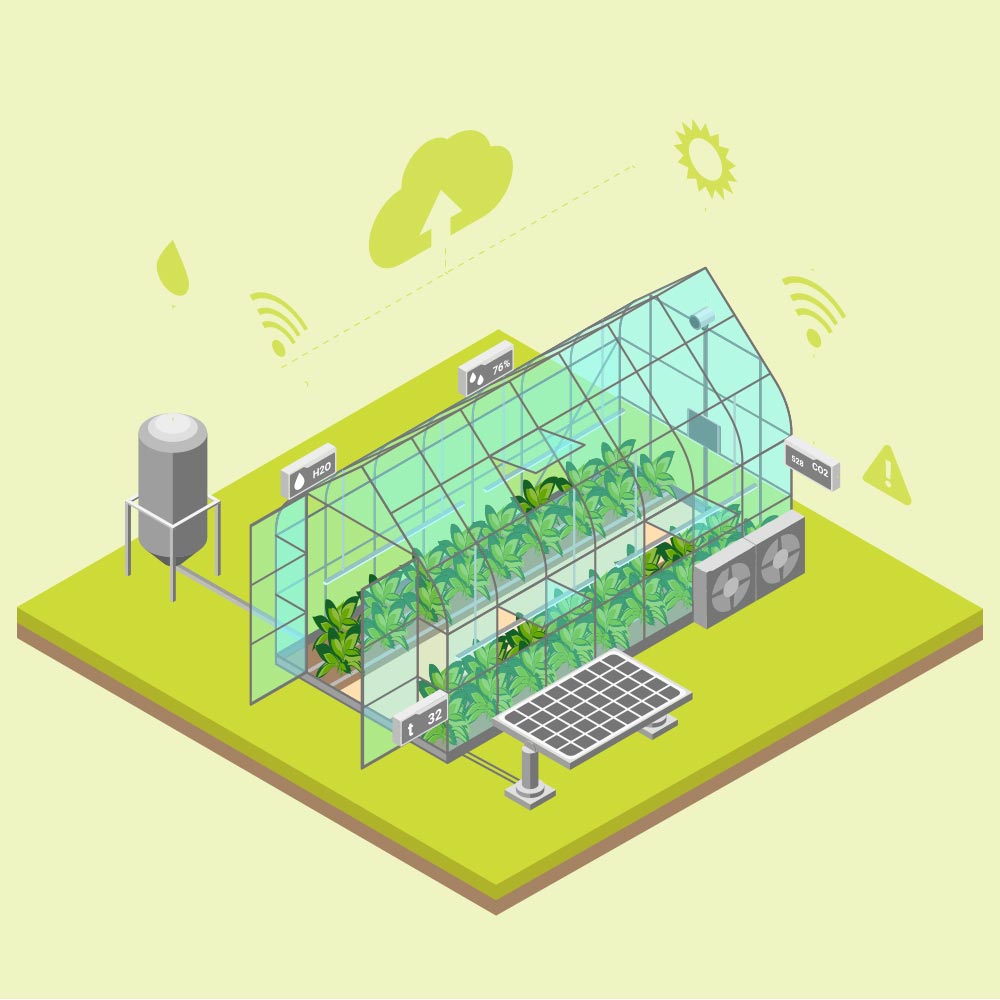Kirigami-inspired solar panels
The ancient art is inspiring the design of solar cells so they can change shape to catch the sun
Green hydrogen, generated from renewable energy sources, has the potential to transform agriculture into a more sustainable and emissions-free sector.
Agriculture and construction are major contributors to global greenhouse gas emissions, together accounting for 37% of the total. Agriculture alone contributes 12%, and it faces the dual challenge of meeting growing food demands while reducing its environmental footprint. This article explores how green hydrogen can help foster sustainable agricultural practices.
Here are some of its most important applications.
Do you like what you see? Download the PDF here.
While renewable energy sources can meet most of a farm's energy needs, certain operations—such as running heavy machinery or heating systems—require an additional solution. Here, green hydrogen emerges as a critical complement to renewable energy, enabling sustainable development. Below are examples of how green hydrogen is driving more sustainable agricultural practices.
Tractors, harvesters, and other heavy machinery traditionally rely on fossil fuels like diesel because the energy density of current electric batteries is not sufficient to power such equipment for extended periods. Green hydrogen offers an alternative, enabling emissions-free operation of agricultural machinery.
There are two ways to utilize green hydrogen in heavy machinery:
For example, researchers at the Vienna University of Technology (TU Wien) have developed a hydrogen-powered tractor prototype that uses a fuel cell to charge a 14 kWh battery. This innovation eliminates carbon emissions, producing only water vapor as a byproduct. Major manufacturers are also exploring similar technologies to transition agricultural machinery away from fossil fuels.
The Haber-Bosch process, which synthesizes ammonia by extracting nitrogen from the air, revolutionized intensive agriculture by enabling large-scale fertilizer production. However, this energy-intensive process currently depends on fossil fuels and emits significant amounts of CO₂.
Integrating green hydrogen into the Haber-Bosch process can substantially lower these emissions. Replacing conventional hydrogen (derived from natural gas) with green hydrogen (produced via electrolysis powered by renewable energy) minimizes the environmental impact of fertilizers.
At the same time, as the agricultural sector moves toward reducing chemical fertilizer use, organic fertilizers made from biodegradable materials offer a promising alternative. These options help cut dependency on synthetic products with a high carbon footprint.

Notably, one of the world’s largest potato chip manufacturers recently partnered with a fertilizer producer to source fertilizers made with green hydrogen. This initiative will greatly reduce CO₂ emissions in potato farming, promoting a more sustainable supply chain.
Maintaining optimal temperatures is essential for greenhouses and livestock facilities, especially during winter. Green hydrogen can replace diesel or natural gas to provide heat in situations where solar or wind energy is insufficient. It can also power irrigation systems and pumps for well water.
In Ontario, Canada, a pilot project is using green hydrogen derived from wind energy to heat greenhouses. This approach enables agricultural production during harsh winters without relying on fossil fuels.
Green hydrogen, produced through renewable energy and water electrolysis, has the potential to make farms more sustainable and self-reliant. Installing small electrolyzers on-site, along with solar panels and wind turbines, would allow farms to meet their energy needs independently, reducing reliance on external power grids.
If you’re interested in learning about other renewable energy sources, such as wave energy or blue energy, which complement established solutions like wind and solar power, subscribe to our newsletter at the bottom of this page.
Sources:
All fields are mandatory.
Read the most discussed articles
{{CommentsCount}} Comments
Currently no one has commented on the news.
Be the first to leave a comment.
{{firstLevelComment.Name}}
{{firstLevelComment.DaysAgo}} days ago
{{firstLevelComment.Text}}
Answer{{secondLevelComment.Name}}
{{secondLevelComment.DaysAgo}} days ago
{{secondLevelComment.Text}}